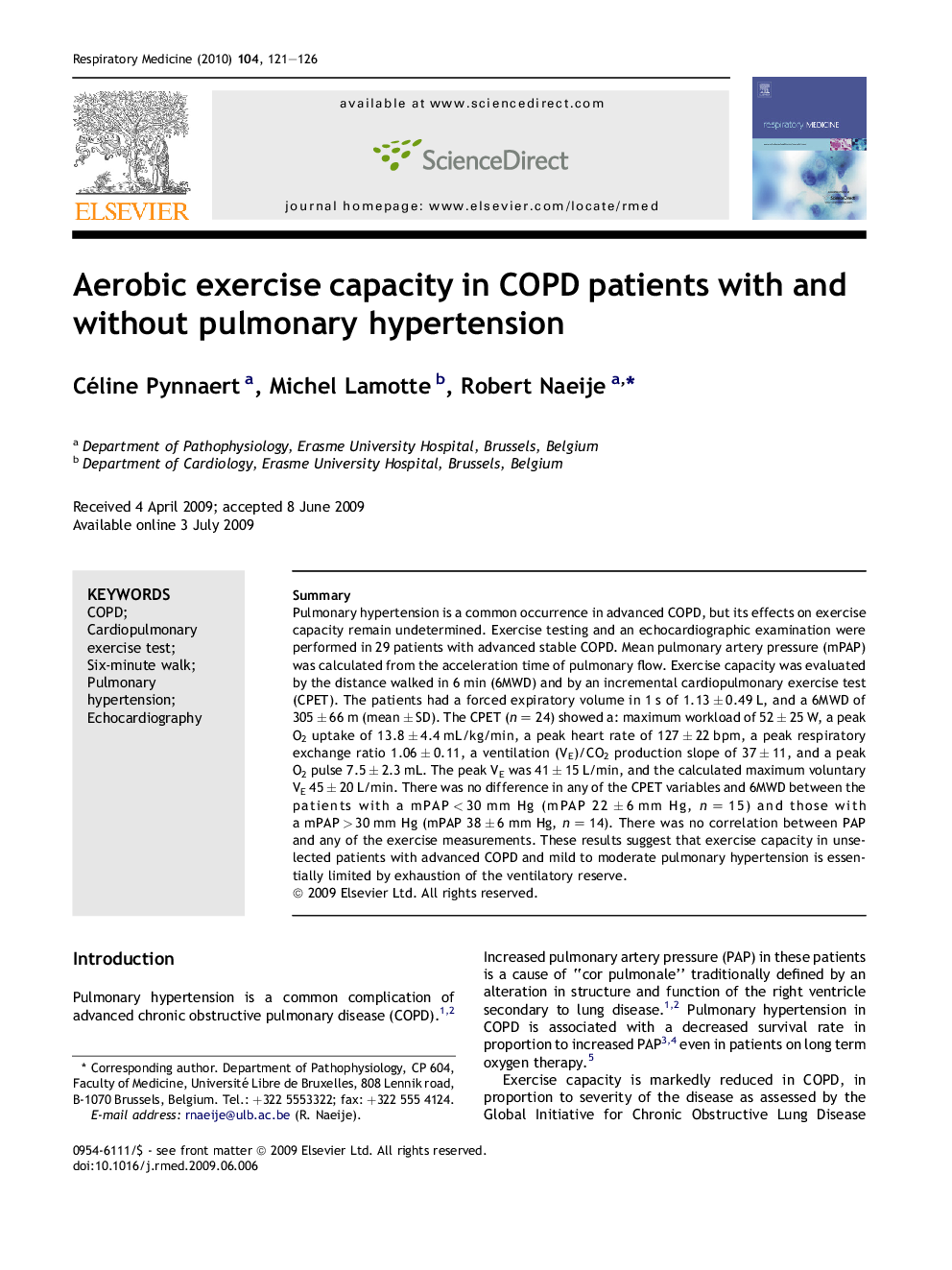| Article ID | Journal | Published Year | Pages | File Type |
|---|---|---|---|---|
| 4210728 | Respiratory Medicine | 2010 | 6 Pages |
SummaryPulmonary hypertension is a common occurrence in advanced COPD, but its effects on exercise capacity remain undetermined. Exercise testing and an echocardiographic examination were performed in 29 patients with advanced stable COPD. Mean pulmonary artery pressure (mPAP) was calculated from the acceleration time of pulmonary flow. Exercise capacity was evaluated by the distance walked in 6 min (6MWD) and by an incremental cardiopulmonary exercise test (CPET). The patients had a forced expiratory volume in 1 s of 1.13 ± 0.49 L, and a 6MWD of 305 ± 66 m (mean ± SD). The CPET (n = 24) showed a: maximum workload of 52 ± 25 W, a peak O2 uptake of 13.8 ± 4.4 mL/kg/min, a peak heart rate of 127 ± 22 bpm, a peak respiratory exchange ratio 1.06 ± 0.11, a ventilation (VE)/CO2 production slope of 37 ± 11, and a peak O2 pulse 7.5 ± 2.3 mL. The peak VE was 41 ± 15 L/min, and the calculated maximum voluntary VE 45 ± 20 L/min. There was no difference in any of the CPET variables and 6MWD between the patients with a mPAP < 30 mm Hg (mPAP 22 ± 6 mm Hg, n = 15) and those with a mPAP > 30 mm Hg (mPAP 38 ± 6 mm Hg, n = 14). There was no correlation between PAP and any of the exercise measurements. These results suggest that exercise capacity in unselected patients with advanced COPD and mild to moderate pulmonary hypertension is essentially limited by exhaustion of the ventilatory reserve.
